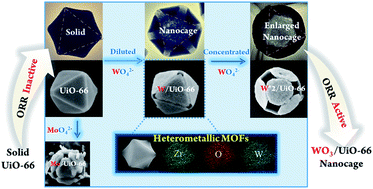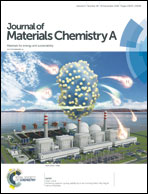Heterometallic metal–organic framework nanocages of high crystallinity: an elongated channel structure formed in situ through metal-ion (M = W or Mo) doping†
Abstract
Hollow metal–organic frameworks (MOFs) are of considerable research interest, but they usually contain only a single chemical component, and their spherical or randomly distributed voids may not have ideal properties. In this work, we found that incorporating WO42− ions into UiO-66 could realize a fine caving of the single crystals, which created W/UiO-66 nanocages with an uncommon and well-defined channel structure. Inspiringly, the width of the channel could be tuned on the nanoscale (80–140 nm) by varying the dose of WO42− in the etching reaction. Despite the accommodation of abundant W, the as-formed nanocages were of high crystallinity, which was confirmed by HRTEM images collected using a K2IS direct-detection electron-counting camera. As a result, the channel structure, which was well preserved after annealing, and the incorporation of W endowed the calcined W/UiO-66 nanocages with highly-improved activity in the oxygen reduction reaction (ORR). This synthetic strategy could also be applied to creating Mo-bearing UiO-66 nanocages, and may inspire the rational design of other intricate MOFs.



 Please wait while we load your content...
Please wait while we load your content...